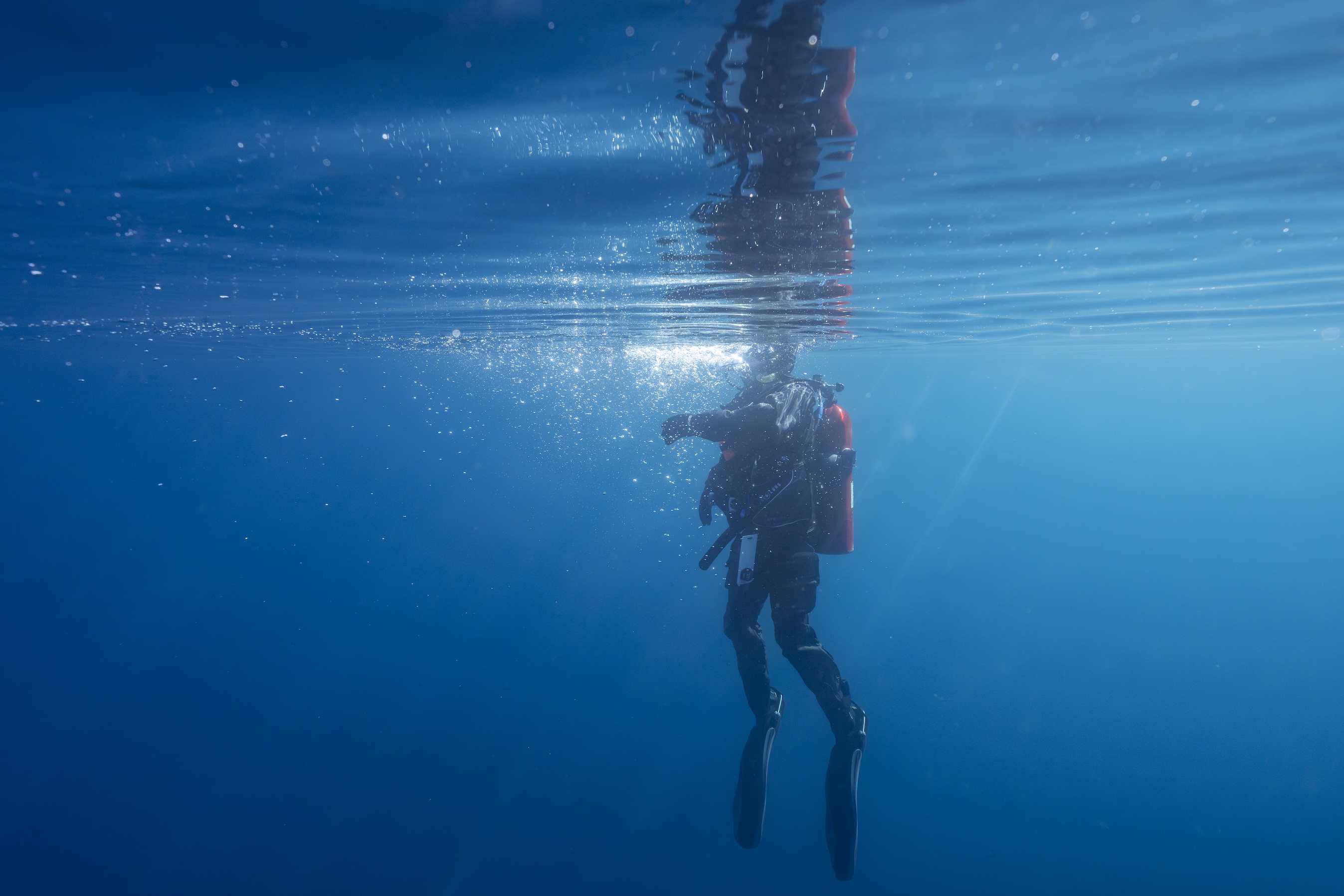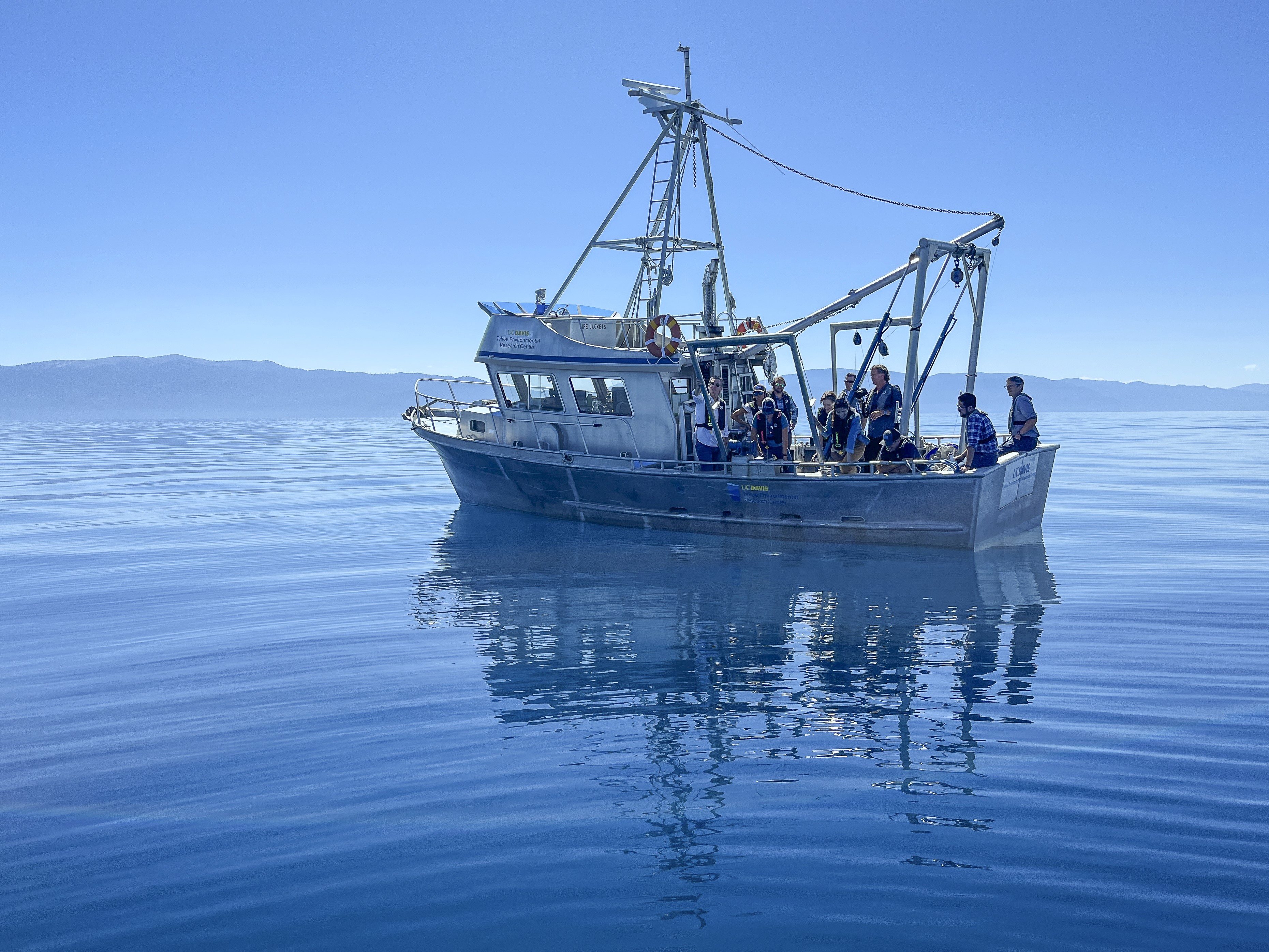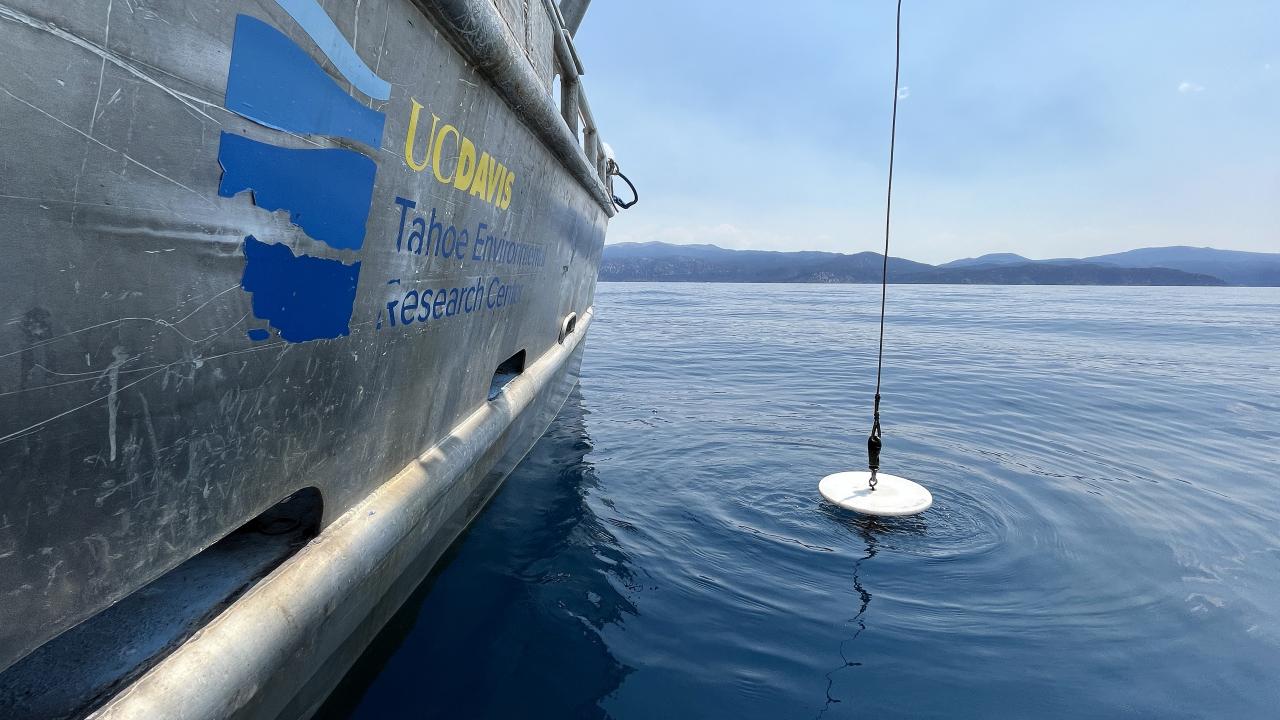The clarity of Lake Tahoe’s famed blue waters in 2023 continued its years-long trend of improving during the winter and deteriorating during the summer. The annual clarity report, released today by the University of California, Davis – Tahoe Environmental Research Center, found that winter lake conditions were the clearest observed since 1983, with visibility of 91.9 feet under the surface, compared with 72.2 feet in 2022.
Summer months tell a different story, marking the fifth murkiest on record with an average of 53.5 feet, compared with 68.9 feet in 2022. Overall, the annual average for lake clarity dropped to 68.2 feet from its 2022 value of 71.9 feet.
“It’s important to understand the short-term changes but even more important to be thinking about how this lies in the context of the longer-term trends,” said Alexander Forrest, interim director of the UC Davis Tahoe Environmental Research Center.

Plankton, plastic, and particles
The clarity report attributes 2023’s clearer winter months (December 2022 through March 2023) to deep mixing events that brought clear water to the surface from the bottom of Lake Tahoe. After the clear winter months, the report highlighted the role of runoff and plankton in the observed low summer clarity values.
Runoff from the heaviest winter snowfall in 70 years brought an influx of inorganic particles and a rapid drop in clarity in May. The report said the dominant phytoplankton species, Cyclotella, has decreased since 2017, while another, slightly larger algae, Synedra, is increasing. Changes among the phytoplankton and zooplankton communities within the lake also have the potential to impact clarity.
Phytoplankton are microscopic plants, while zooplankton are microscopic animals that often eat phytoplankton. These planktonic assemblages play critical roles in lake food webs and ecology, and their interplay with lake clarity presents ongoing research questions and opportunities.
“Phytoplankton assemblages have been changing in Lake Tahoe over the last decade, and we need further research to understand the full implications of this on Tahoe clarity,” Forrest said. Meanwhile, nonnative Mysis shrimp are beginning to return, while zooplankton species are also experiencing changes to their populations.
While algae and particles are known to influence clarity, less is known about the potential impact of microplastics.
“Research has confirmed the presence of microplastics in Tahoe, and we know small pieces of plastic have the potential to affect clarity, but we don’t know their relative contribution to Lake Tahoe,” Forrest said.

Search for clarity
UC Davis has been measuring clarity and other health indicators at Lake Tahoe since 1968. Clarity is measured as the depth to which a 10-inch white disk, called a Secchi disk, remains visible when lowered into the water. Lake Tahoe’s clarity is just one measure of the health of the watershed, but measurements of clarity loss in the 1950s and 1960s by the UC Davis Tahoe Environmental Research Center became central to efforts to protect the watershed from pollution and unplanned development.
UC Davis works with the Tahoe Science Advisory Council and partners across the Tahoe Basin to help inform policymakers and the community on strategies to protect the lake and stabilize the decline in clarity that occurred following the mid-20th century development boom. In 1969, the states of Nevada and California created the Tahoe Regional Planning Agency (TRPA) to lead the collaborative effort to protect and restore Lake Tahoe, set environmental standards, and better manage growth and development in the region. Under the Lake Tahoe Environmental Improvement Program, or EIP, the states of California and Nevada along with more than 80 public and private organizations are actively working to restore lake clarity to its historic 97.4 feet. EIP partners have implemented hundreds of projects to restore the filtering function of wetlands and treat stormwater runoff.
“Thanks to the bi-state partnership, Lake Tahoe is one of the most protected watersheds in the nation,” TRPA Executive Director Julie Regan said. “The science community has played a pivotal role in the drive toward environmental restoration, and we’re proud of the progress we’ve collectively made on Lake Tahoe’s clarity over the decades. What happens on the land here affects the lake, and we continue to look to science to inform and prioritize Tahoe’s restoration projects.”
In 2023, UC Davis scientists took 25 individual readings at Lake Tahoe’s long-term index station. View the historic clarity readings from 1968-2023 in the clarity report at https://tahoe.ucdavis.edu/terc-publications.
Media Resources
Read the 2023 Lake Tahoe Clarity Report.
Press kit of images for download, with credit (in file.)
Media Contacts
- Alexander Forrest, UC Davis Tahoe Environmental Research Center, alforrest@ucdavis.edu
- Jeff Cowen, Tahoe Regional Planning Agency, 775-589-5278, jcowen@trpa.org
- Andy Fell, UC Davis News and Media Relations, 530-304-8888, ahfell@ucdavis.edu
